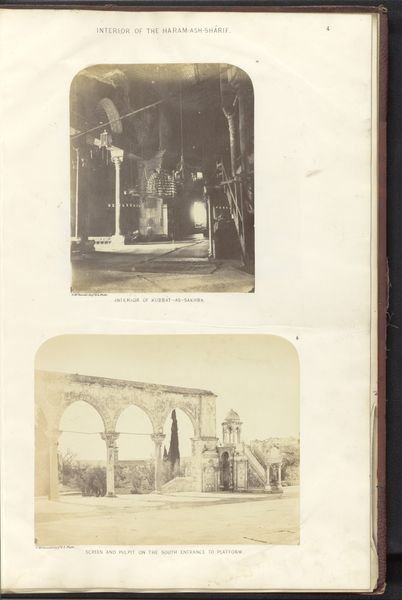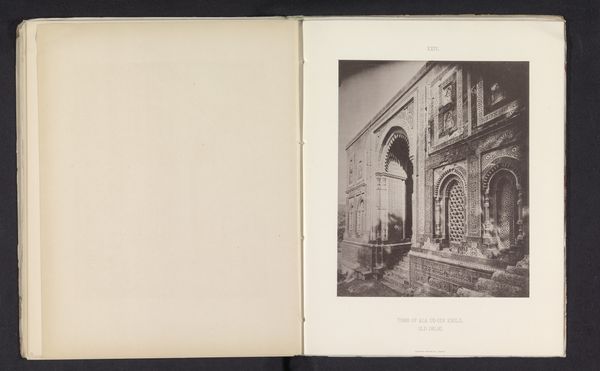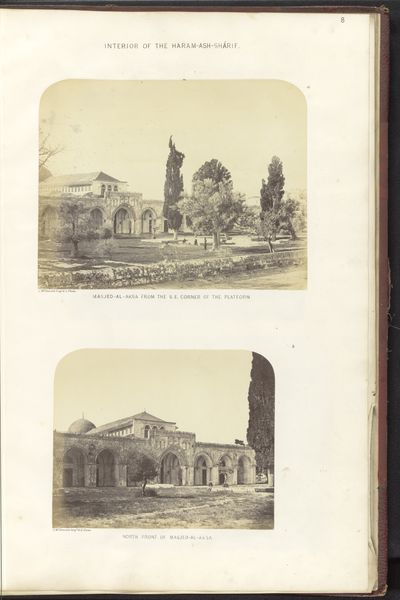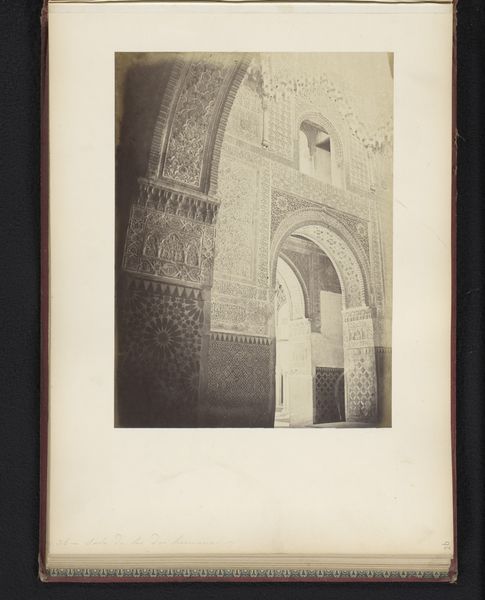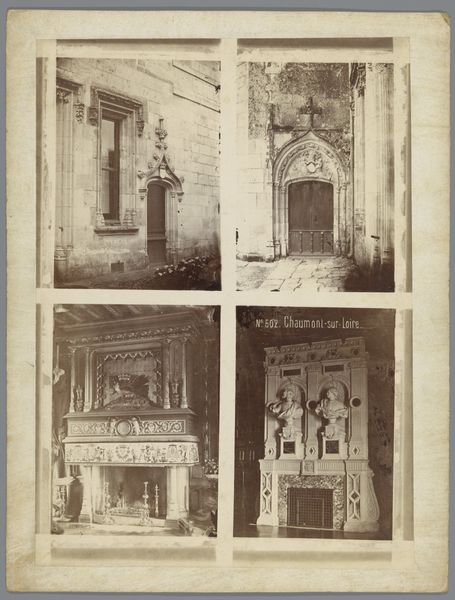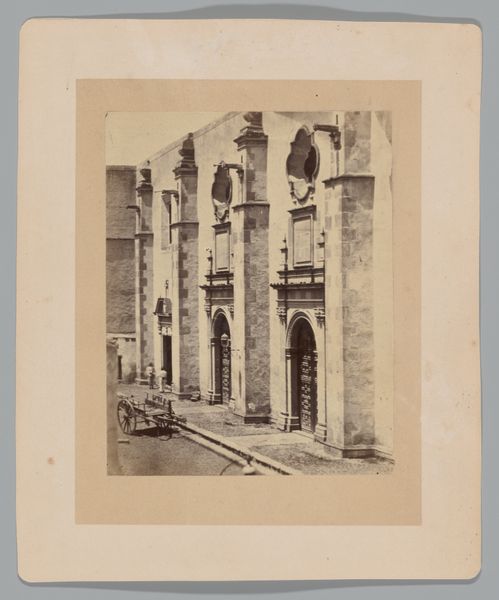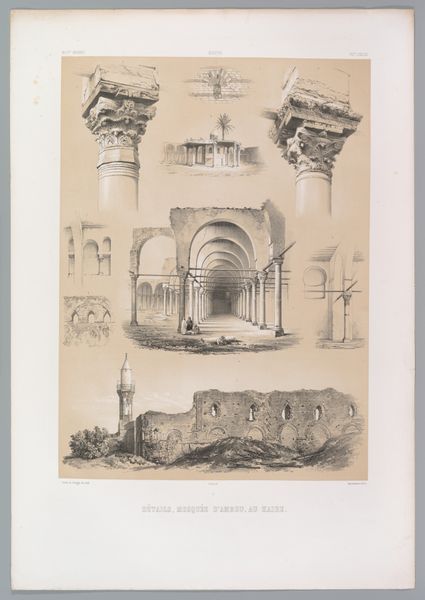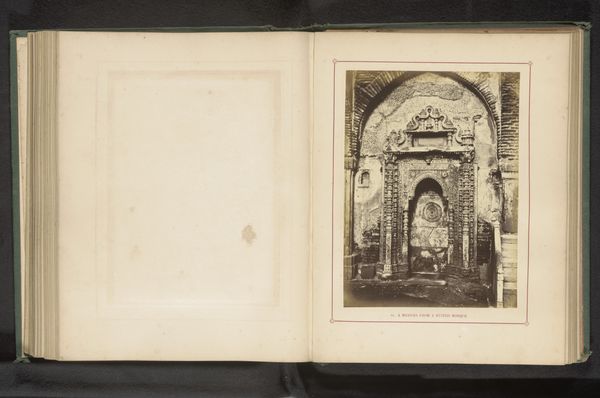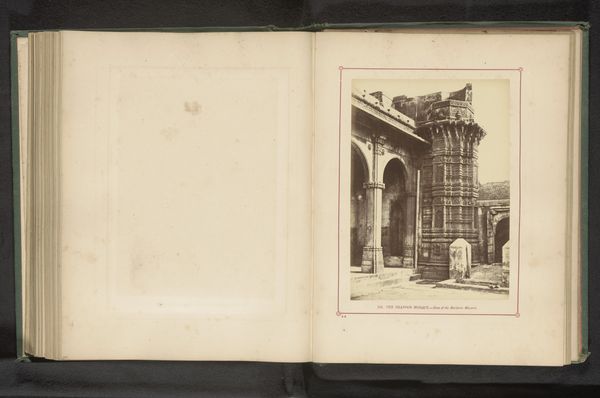
Gezicht op de westelijke ingang en een gezicht op de noordoostzijde van de Rotskoepelmoskee op de Tempelberg in Jeruzalem before 1865
0:00
0:00
print, photography, architecture
# print
#
landscape
#
photography
#
coloured pencil
#
islamic-art
#
architecture
Dimensions: height 523 mm, width 340 mm
Copyright: Rijks Museum: Open Domain
Editor: So, here we have a photographic print, titled "Gezicht op de westelijke ingang en een gezicht op de noordoostzijde van de Rotskoepelmoskee op de Tempelberg in Jeruzalem," which translates roughly to "View of the Western Entrance and a view of the Northeast Side of the Dome of the Rock Mosque on the Temple Mount in Jerusalem." It’s dated before 1865. It has such a serious, almost reverential feel to it, what strikes you about this image? Curator: It speaks of time, doesn’t it? Looking at this, I can almost feel the weight of history, not just in the Dome itself, but also in the act of capturing it through photography back then. This print reminds us that seeing isn't only believing; it’s also interpreting a moment filtered through a lens, a photographer's perspective, and even the very chemicals of that bygone era. You could almost smell the development process… It makes you wonder, what was the photographer thinking and feeling? Was there a sense of profound importance of capturing something that has so much rich and spiritual weight? Editor: Absolutely! Thinking about it as more than just a document... I am thinking now that each little thing is so detailed in it. I am realizing that this adds value in photography from then. Were they thinking the same way of detail back then as now? Curator: It’s all conjecture of course! But perhaps they recognized the ability of photography to freeze those little moments forever. Don't forget, at the time photography was relatively new; the urge to record meticulously would have been so novel, and that attention to detail allows us to connect across so much time and with that far off land. So, tell me, how does that impact you as a modern-day viewer of this scene? Editor: It certainly heightens the feeling of responsibility... like we have been passed the torch in understanding this complex monument, not only of its art but also its significance and place in history. It is more to just photography, it now a artifact in a museum that needs care. Curator: Precisely! The photograph evolves into a historical document with its own journey to care for. A lovely thought.
Comments
No comments
Be the first to comment and join the conversation on the ultimate creative platform.
